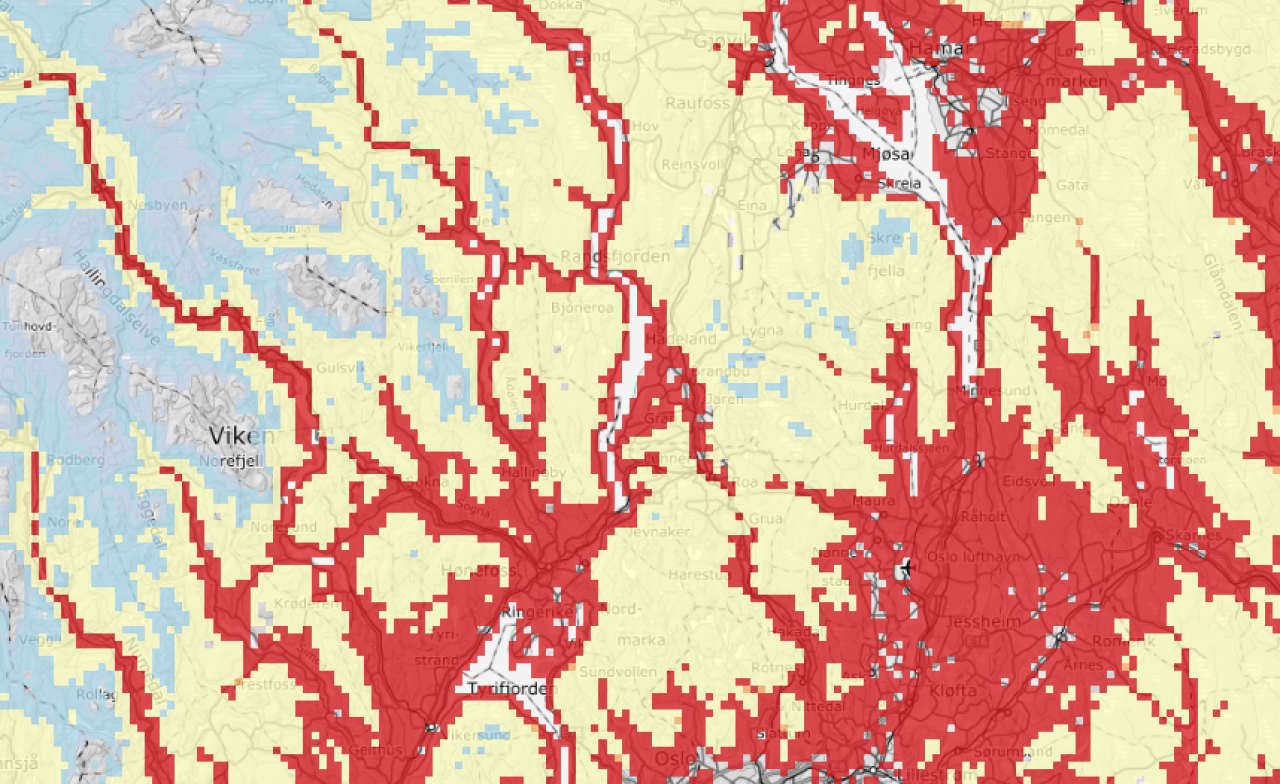Beetle development/generations

Today, Ips typographus usually completes one generation per year in Norway. With a warmer climate, much of southern Norway can get high enough temperatures for the beetles to complete two generations per year. We are already experiencing such conditions in certain areas, such as around the Oslo fjord. A transition from one to two generations could give increased bark beetle damage because the beetles then will have two attack periods each summer.
The map “Generasjoner/utvikling” (Beetle development/generations) shows an estimate of how far Ips typographus has proceeded in the development of a first, and possibly second, generation. The map is updated on Monday, Wednesday and Friday each week.
The map is based on a temperature model that calculates the development time from egg to adult beetle (Wermelinger & Seifert 1998, Lange et al. 2009). The model has shown good temporal agreement with the completion of the first generation in Norway (Krokene 2011). However, the proportion of beetles that initiates a second generation is also influenced by factors other than temperature. Field studies in Sweden indicate that the proportion of beetles starting a second generation is greatest in the south and decreases towards the north (Fritscher & Martin Schroeder 2022).
The map shows five phenological stages:
- Spring flight of hibernating beetles produced the previous year
- Larvae of 1st generation (“summer generation”) are fully developed
- Flight of 1st generation adults
- Larvae of 2nd generation (“autumn generation”) are fully developed
- Adults of 2nd generation are fully developed
Today, tree attack and damage only occur when hibernating beetles fly early in the season (1). The offspring of these beetles (the “summer generation”) are fully developed by mid-summer and stay under the bark until late autumn if there is only one generation per season. If the summer is warm, however, the summer generation can fly earlier and give rise to a second generation (the “autumn generation”) (3). It is this second flight and attack period that can cause increased damage to spruce forests. Successful hibernation of the autumn generation requires that the beetles are fully developed before winter (5), since larvae and pupae have very high winter mortality.
Literature – see also "Publications" at the bottom of the page
Fritscher, D. & Schroeder, M. 2022. Thermal sum requirements for development and flight initiation of new generation spruce bark beetles based on seasonal change in cuticular colour of trapped beetles. Agricultural and Forest Entomology 24: 405-442. doi https://doi.org/10.1111/afe.12503.
Wermelinger B. & Seifert M. 1998. Analysis of the temperature dependent development of the spruce bark beetle Ips typographus (L.) (Col., Scolytidae). Journal of Applied Entomology 122: 185-191.
Contacts

Links
To map layers in KildenContacts

Publications
Authors
Paal KrokeneAbstract
No abstract has been registered
Abstract
No abstract has been registered
Abstract
No abstract has been registered
